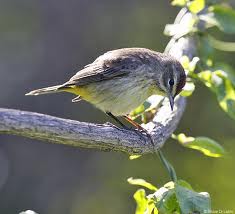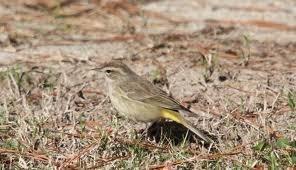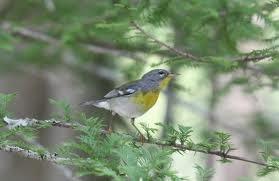By Elisa Vele-Tabaddor
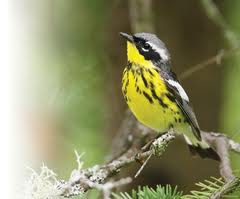
The other morning I awakened to an early sunrise and the sweet sound of birds tweeting outside my window–a much welcomed sign that Spring is approaching. Soon the trees will blossom, the temperatures will rise, and various migratory birds will brighten our local green space with stunning colors and song.
During their Spring and Fall migration, about 200 species of birds follow the Atlantic Coast Flyway travelling to Northern New England and Canada from the tropics of Florida and Central and South America and back again getting a ride on the Atlantic Gulf Stream. Between mid-April and mid-May is the best time to view the spring migration and catch sight of a variety of songbirds, warblers and hummingbirds.
Each year about 28 species of Warblers can be regularly spotted. More than 20 species of warblers have been seen on a good day at Swan Point. The greatest diversity of warblers usually peaks around mid-May but there are plenty near the end of April. (The Sun Chronicle, 2010). Look in tree tops, especially of oak trees, where they feed on the caterpillars munching on unfurling leaves.
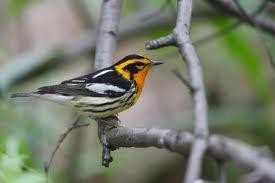
Warbler sightings in Blackstone Park:
- Hooded Warbler
- Black & White Warbler
- Pine Warbler
- Blackpoll Warbler
- Mourning Warbler
- Wilson’s Warbler
- Canada Warbler
- Nashville Warbler
- Worm-eating Warbler
- Black throated Blue Warbler
- Magnolia Warbler
- Black throated Green Warbler
- Palm Warbler
- Northern Parula
- American Redstart
- Common Yellowthroat
As our bird population burgeons in the Spring, it gets me thinking about what can we do to help protect and nourish the birds in and around Blackstone Park.
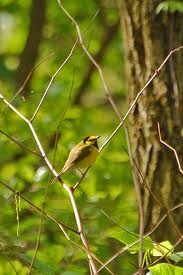
Hooded Warbler Individuals can pay attention to habitat and migration issues. They can also donate time and money to local conservation organizations that support wildlife habitats. Animal lovers can walk domestic cats and dogs in designated areas so as not to disrupt or destroy ground- or low-nesting animal life. They can also bypass areas of natural landscape that provide dense, protective nesting areas and wild seeds that nourish our bird population.
- Simply observing and recording the wildlife that you see while walking around or in the Conservation District can help. With the help of Brown University students, the BPC hopes to erect bulletin boards where passersby can note their sighting of birds and animals. Such records can be useful to scientists.
- Keeping neighborhood parks clean and free of debris and trash can also help protect wildlife. Use designated trash cans whenever visiting neighborhood parks and be a good neighbor by picking up trash in green areas.
- Avoid using toxic lawn chemicals.
